SNEAKER • AIR JORDAN • AIR JORDAN 11
How To Spot FAKE Air Jordan 11 Cool Grey in 2023

The most complete and up to date legit check guide for Air Jordan 11 Cool Grey in 2023. See comparisons between Real Vs Fake shoes.
"We're creating a reliable and up-to-date guide for authenticating sneakers, streetwear, and luxury items. Our team of experts use multiple references during the authentication process for the most accurate results."
- Dype Team
Here's How You Can Legit Check This Item
- •Rear View
- •Jumpman Logo
- •Toe Box
- •Lace Tab
- •Tongue Label
- •Soles
- •Size Tag
- •Insoles
- •Footbed / Insole Stitching
- •Box Label
- •UV Light
- •Jumpman Logo
Rear View
Let's begin by taking a look at the rear view of the Air Jordan 11 Cool Grey. A couple flaws we'll be on the look out for are the shape, size, alignment and the number design.
The areas we'll be examining are [1] Heel Padding [2] Lower Patent Leather [3] Stitching

Color
Denoted by the yellow outline. When counterfeit manufacturers deal with uncommon/peculiar colors, they'll often compensate with another similar shade of color. On the fake Jordan 11, you can see that the shade of grey used is much darker than on the retail shoe.
NOTE: Lighting will change your perception on the coloring. The image above is with the same lighting.
Lower Patent Leather
Denoted by the red circle. Notice the slight widow's peak on the patent leather on the replica Jordan 11. This isn't a 100% full proof indicator of authenticity, however it's still a great reference point. Authentic Jordan 11s will seldom have this flaw.
Jumpman Logo
Next, let's take a look at the Jumpman Logo on the side of the Air Jordan 11 Cool Grey. Our focus would be on the quality of the embroidery.
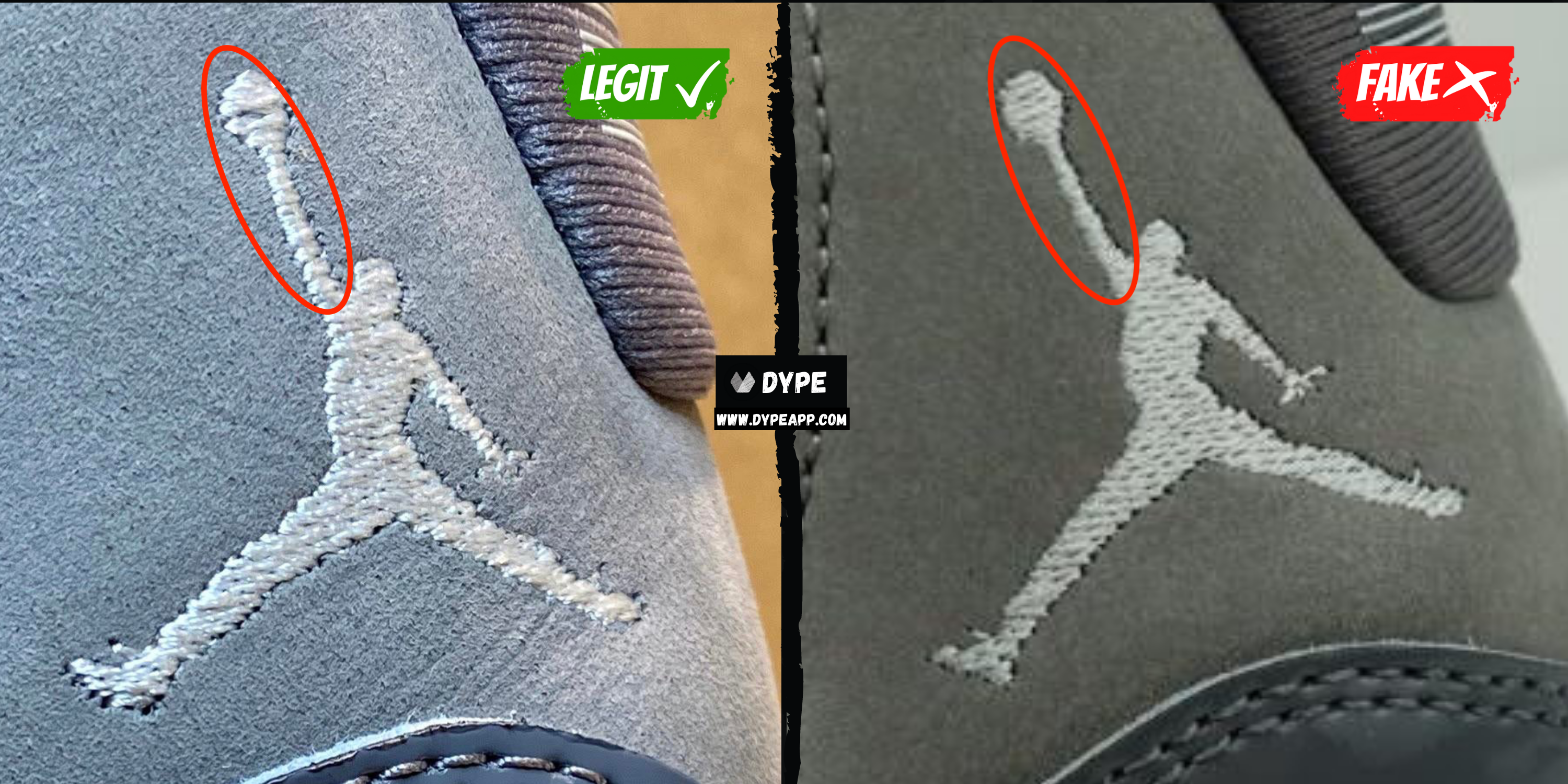
Denoted by the red circle. The fake Jordan 11 Jumpman's arm is too skinny relative to the retail pair. Whereas, the authentic logo is much thicker and is using thicker threads.
The fake shoe is using thinner threads for the embroidered Jumpman compared to the original. You can tell due to the depth of the Jumpman. When you run your finger over the Jumpman, it should feel elevated and bumpy. However, on the fake you can tell that the logo is sunken into the sneaker itself because of thin threads. This will make the texture feel flat and smooth.
Toe Box
Next, let's take a look at the overall shape of the toe box and Air Jordan 11 Cool Grey from the side profile. Counterfeits will usually be "inflated" or "bulky" at the shape or toe box of the shoe. They'll also often have a longer/shorter toe box compared to retails.
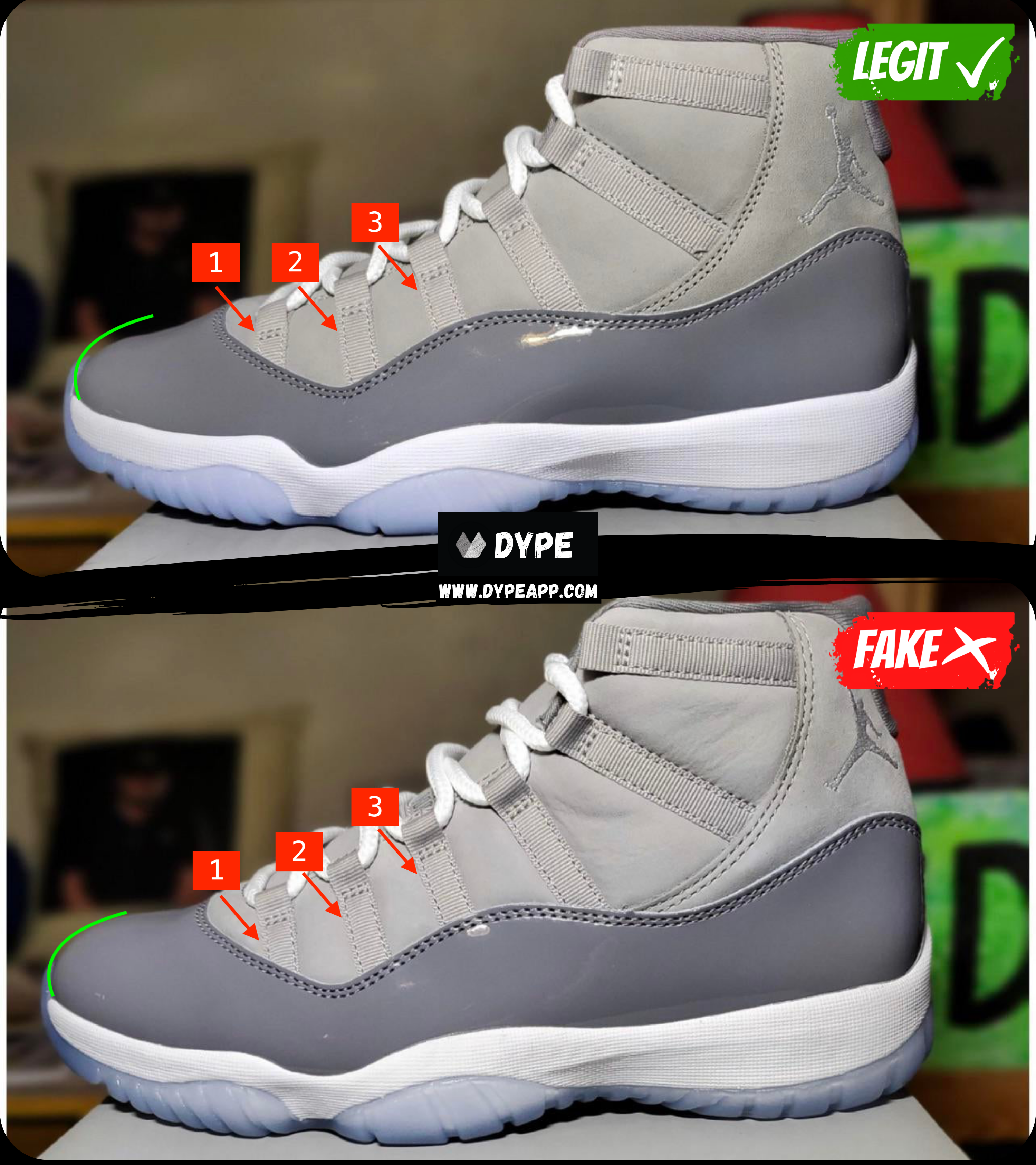
Denoted by the green curved line. The green curved line is identical on the bottom and top image. However, on the fake Jordan 11, the toe box is much too bulky and big compared to the original. You can see how the original shoe takes up less space and still has room left over.
Also notice that the overall shape of the fake Jordan 11 Cool Grey is way bigger than the retail pair. If you don't catch this difference on first glance, take a look at the shoe lace straps denoted by the red arrows numbered 1, 2 and 3. Strap 1 is much longer on the replica shoe than on the real one. Strap 2 and 3 are almost the same size on the fake, whereas 2 is longer than 3 on the retail pair.
Lace Tab
Next, let's take a look at the laces and the lace tab of the Jordan 11 Cool Grey.

Denoted by the red arrows. The replica lace tab uses grey colored threads for the stitching. However if you take a look at the authentic pair, it uses white threads.
Also notice the darker shade of grey used on the fake for the letters on the tab. The real pair is a lighter shade of grey. The lighting in the image above is the same, however, keep in mind that lighting will change your perception of the color.
Tongue Label
Next, take a look at the inner tongue, where a label is present. We'll examine the quality of the stitching and embroidery of the text. Top-tier counterfeits will usually have the embroidery correct, since the retails themselves are not

Denoted by the red outlines. The example above is showing a top-tier replica Jordan 11, so the embroidery is actually nearly comparable to the retails. However, one flaw we can point out is the thickness of the threads in the stitching. You can see that the fake is using thicker threads for their stitching compared to the retail. You can see this being most prominent in the bottom stitching where there it's stitched twice.
Soles
Next, let's flip the Jordan 11 Cool Grey over and look at the bottom outsoles of the shoe. We'll take a look at the [1] Carbon Fiber [2] Translucence
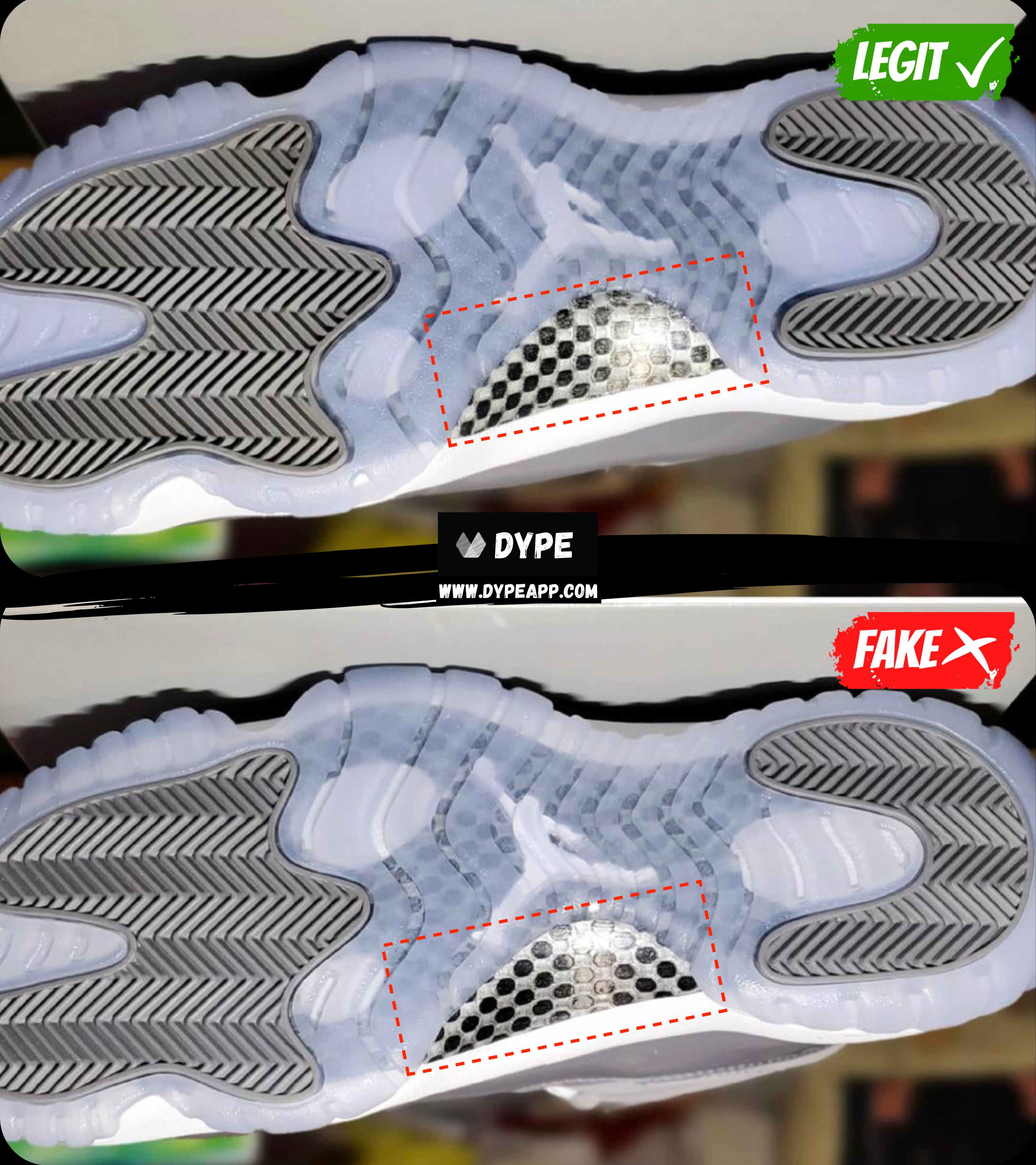
Carbon Fiber
Denoted by the red box. Notice the checkered pattern of white/black on the carbon fiber of the Jordan 11. Authentic Jordan 11s will have black squares with rounded corners. However, on the fake you can see that the black spots are too rounded on the corners, which doesn't resemble a "square" at all anymore. They are black circles.
All Air Jordan 11 Cool
Size Tag
Next, let's take a look inside the Air Jordan 11 Cool Grey shoe where the size tags are present. We'll be on the lookout for text [1] Thickness [2]Spacing [3] Inconsistencies
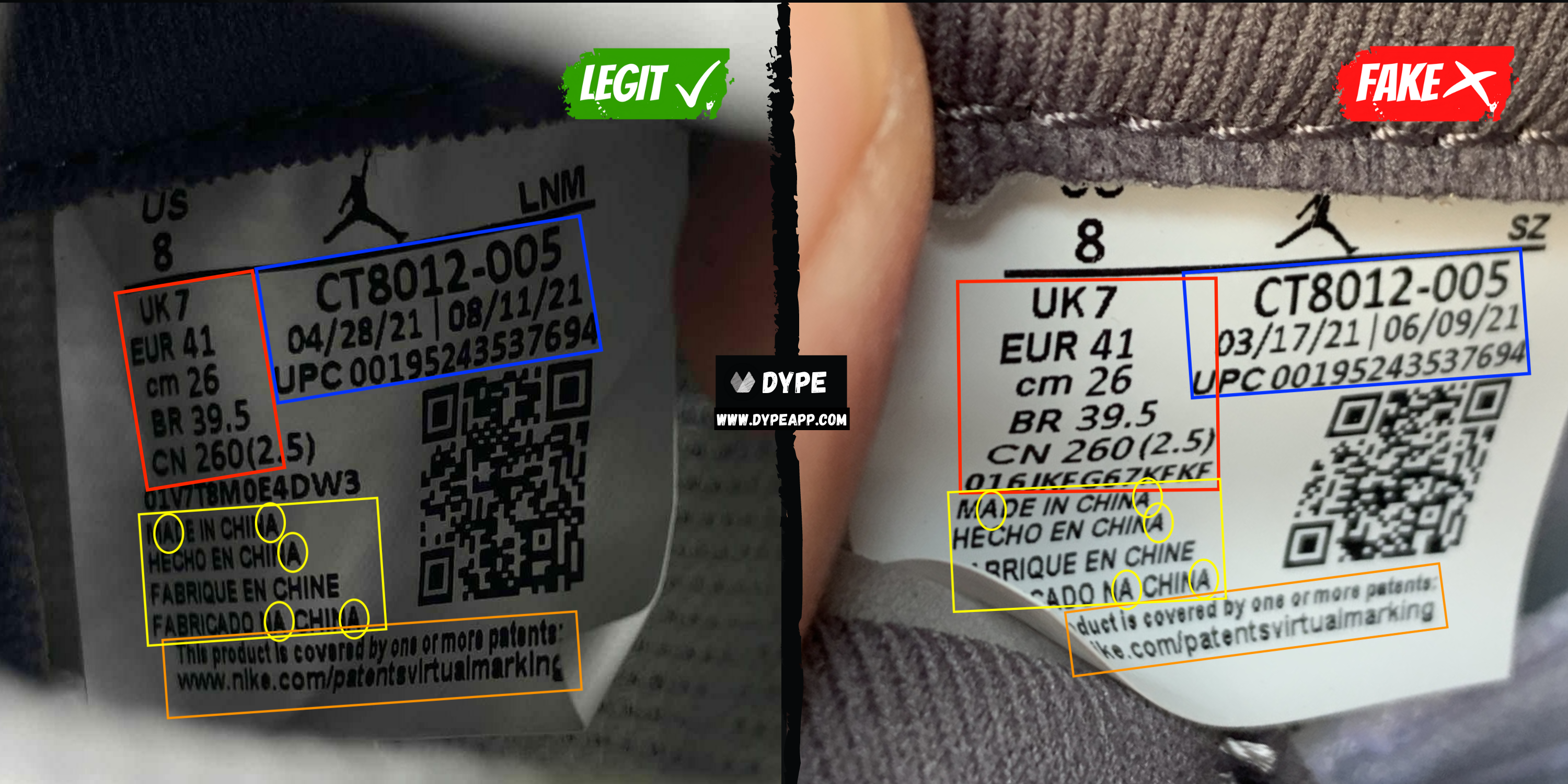
The overall size tag font is much thicker on the authentic shoe tag than on the fake. This is extremely difficult to distinguish without a retail pair in hand. Here are some differences we've highlighted...
Denoted by the red box. The authentic size label is actually thicker and a smaller font size than on the fake. You can see the difference in thickness being most prominent in "BR" and "CN. You can notice the difference in font size by comparing the sizes/countries text to the 13 digit alphanumeric code right under it. The sizes/countries text is the same size as the alphanumeric code text on the authentic. However on the fake, the sizes/countries text is slightly bigger than the alphanumeric code.
Denoted by the blue box. Once again, here we see that the authentic size tag overall is much thicker than on the replica.
Denoted by the yellow box. We see this flaw of thickness arise again in this area. It is difficult to notice at first, but take a look at the difference in all instances of the letter "A" - denoted by the yellow circles.
Denoted by the orange box. The original is much thicker once again, and it is most obvious in all the instances of the letter "a" within the text "patentsvirtualmarking".
Insoles
Next, we'll examine the insoles inside of the Jordan 11 Cool Grey. We'll take a look at the front and back of the sneaker. The insoles will have the Air Jordan Jumpman Logo.

Denoted by the yellow outline. The replica insole uses a much darker grey relative to the retail pair. The authentic Jordan 11 Cool Grey has a tint of "green" or "blue" to it. This will be difficult to tell unless compared with a retail. Keep in mind that the right image has better lighting and the grey is still darker than on the left. Lighting will change your perception of the color, so use intuition to determine if other factors are affecting it.
Footbed / Insole Stitching
Next, let's take a look deep inside the Air Jordan 11 Cool Grey. We'll be taking a look at the footbed of the sneaker, which is underneath the insoles. You'll have to remove the insoles from the sneaker to see this area. If it is glued shut, you may want to use a blow dryer to heat and soften the glue...
We'll be considering multiple indicators on the footbed: [1] Stitching Density [2] Footbed Coloring
Authentic Air Jordan 11s follow a pattern on the number of stitching used (the frequency of threads), so if the Air Jordan 11 seems like it has way too few or way too many white threads, then it is most likely a fake.
Reminder that we're not looking at how messy or how short/long each white thread is, but rather the total number of threads. This is important to clarify because no online guides or resources seem to know or even want to mention it and we believe it adds confusion for readers.
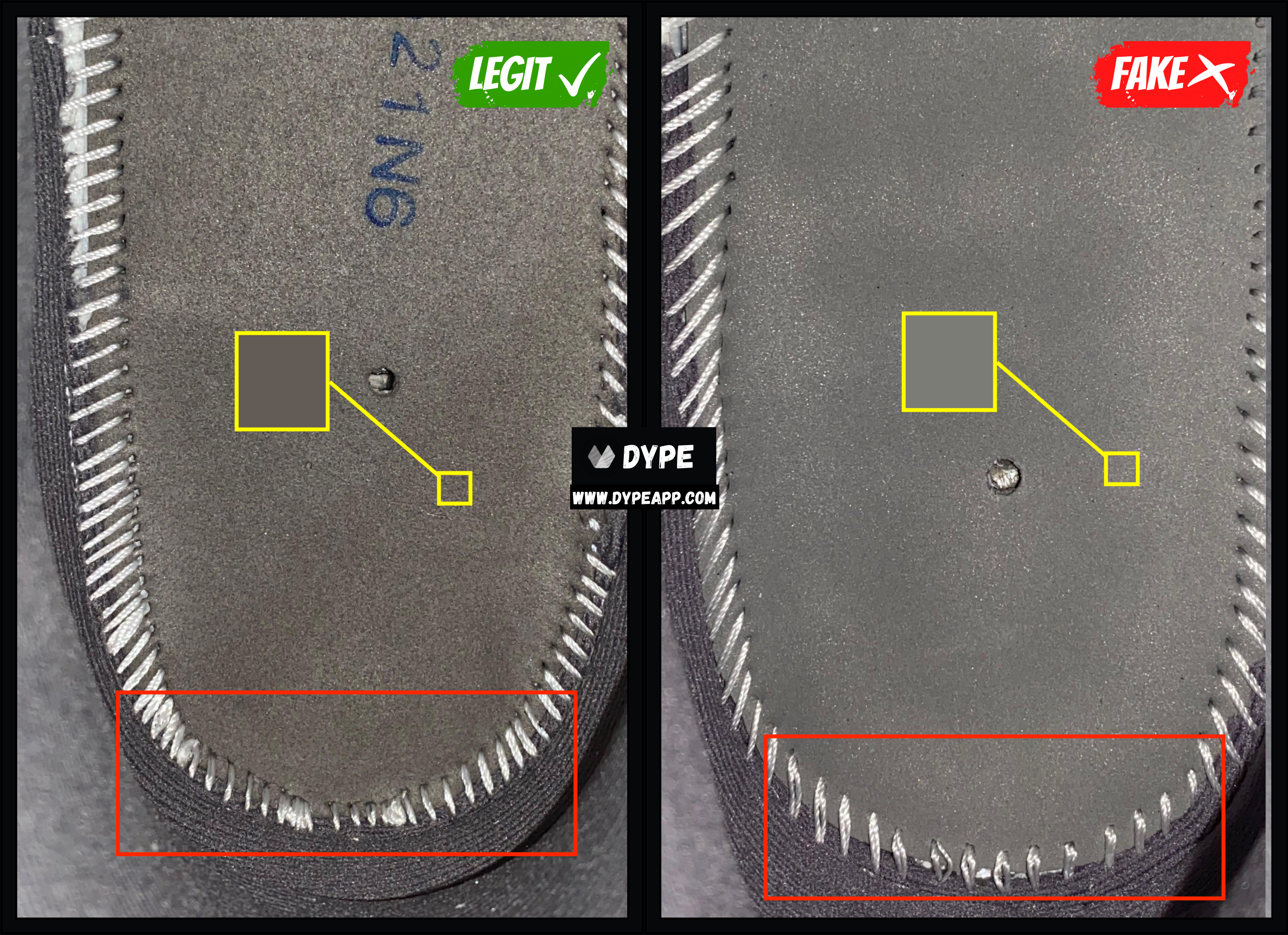
NOTE: The blue code on the footbeds do not hold much meaning as an indication for the authenticity. Some retails will have them. Some won't.
Footbed Coloring
Denoted by the yellow outline. Have a look at that difference in the color on the footbed of the authentic compared to the fake Jordan 11 Cool Grey. The fake uses a lighter grey, whereas the retail uses a dark grey.
Stitching Density
Denoted by the red box. The fake Jordan 11 has a much lower density of stitching throughout the entire footbed. The difference is most prominent on the heel area of the shoe. Within the red box, the real Jordan 11 has around ~25-30 threads give or take, whereas the fake one has ~15 threads.
Box Label
Next let's move onto the box label of the Jordan 11 Cool Grey. The box labels are one of the most consistent indicator we can rely on when it comes to Jordan 11s. We'll focus on [1] Text Thickness [2] Text Spacing

Denoted by the red box. The fake label has absolutely no spacing between the letters at all, which stands out like a sore thumb. The retail is spaced out between each word normally.
Denoted by the yellow box. Observe how small the font size is on the fake box compared to the original.
Denoted by the green box. We see the same flaw with the letters being too small on the fake here as well. The retail font size here is much bigger.
Denoted by the blue box. This time in this area, the replica's font size for the barcode is far too tiny compared to the real Jordan 11 barcode.
UV Light
Finally, to tie it all up. This final step is optional only for people who have a UV light source. This step is universal for ALL sneakers/shoes. Turn off all external lights, and shine your UV light on the Air Jordan 11 Cool Grey and the box itself. Your goal is to look for any marks, stamps, or liquid/glue stains.
NOTE: Some very bad quality retails will have noticeable glue stains at times. However, stamps/marks should NEVER be on the authentic pairs.
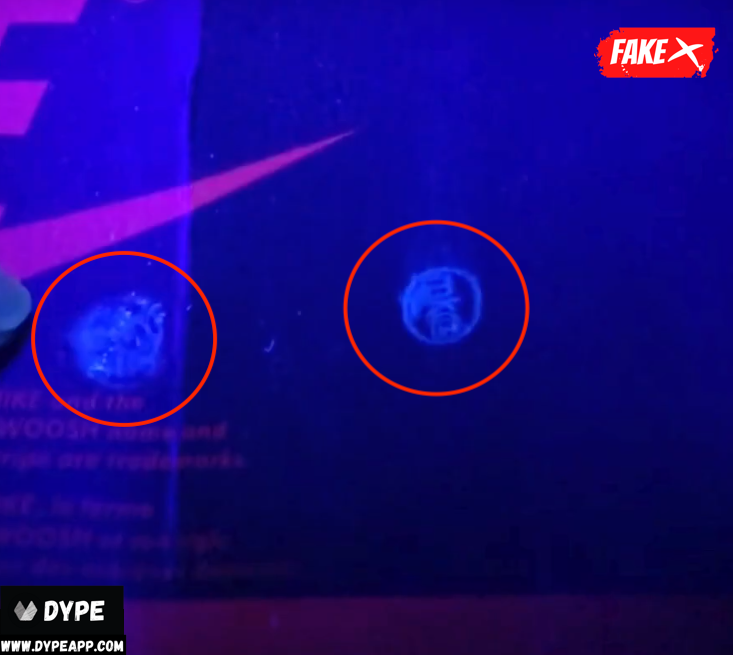

Above are some examples and indicators you're trying to look for. Authentic Air Jordan 11s should be completely mark or stamp free on the shoe itself and the box as well.
The marks shown in the above images are stamps from counterfeit manufacturers.